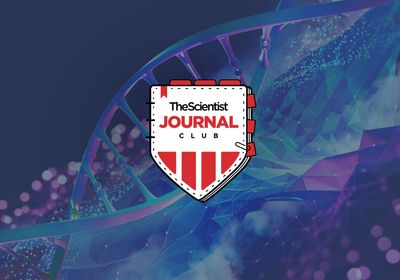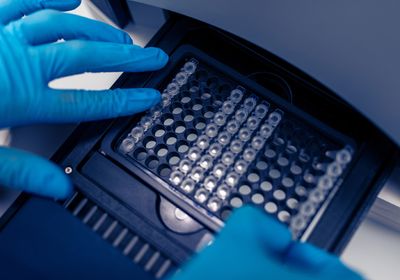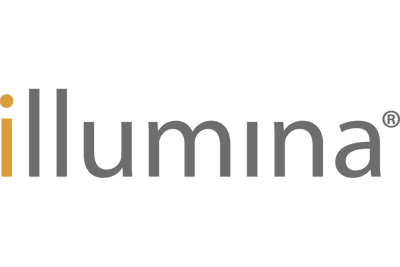 Recombinant adeno-associated viral vectors are the leading platform for treating human diseases through gene delivery.
Recombinant adeno-associated viral vectors are the leading platform for treating human diseases through gene delivery.Stay up to date on the latest science with Brush Up Summaries.
Updated on July 10th, 2023
What Are AAV Vector-Based Therapies?
Gene therapies are groundbreaking approaches utilizing viral and non-viral vectors. These vectors introduce therapeutic genes into patient cells to treat diseases, especially genetic disorders. In clinical trials, adeno-associated viral (AAV) vector-based treatments have emerged as the preferred platform in viral vector gene therapies due to their unique safety and efficacy features.
AAV Vectors
AAVs are single-stranded DNA viruses that require co-infection with other viruses, mainly adenoviruses, to replicate. When used as gene therapy vehicles, researchers generate recombinant AAVs (rAAVs) that contain the DNA for the gene of interest and lack viral genes, packaged into capsids.1 To form these infectious particles in the laboratory, genes necessary for AAV replication and formation are supplied in trans so that they are not present in the final gene therapy product.
When used as gene therapy vectors, rAAVs are known for their single dose gene payload delivery, high transduction rates, broad tissue specificity, low immunogenicity, and long-lasting therapeutic effects.2 As opposed to other commonly used viral vectors, such as adenovirus, lentivirus, and herpes-simplex 1 virus, recombinant AAVs remain unincorporated into host chromosomal DNA; therefore, they are lost over time as transduced cells turnover, which reduces the risk of genotoxicity and immunotoxicity in patients.
R. Jude Samulski, the co-founder and CSO of Asklepios BioPharmaceutical (AskBio), was the first to pioneer AAVs for gene therapy delivery in the 1980s. This research is now the bedrock technology of all FDA approved AAV therapeutics to date (Table 1).3,4
Table 1. FDA-Approved and Pending AAV Gene Therapies
Name | Company | Disease Treatment | Approval Date |
Luxturna® | Spark Therapeutics | Retinal dystrophy | 2017 |
Zolgensma® | Novartis | Spinal muscular atrophy (SMA) | 2019 |
Hemgenix® | CSL Behring | Hemophilia B | 2022 |
Elevidys | Serepta Therapeutics | Duchenne muscular dystrophy | |
Roctavian™ | BioMarin | Hemophilia A | 20236 |
AAV Therapy Limitations
Although the recent successes in rare disease therapy approvals have provided momentum for AAV therapy research and funding, several limitations make this a difficult, capital-intensive platform to develop (Table 2).
Immune Tolerance
One of the most significant challenges is pre-developed immune tolerance. AAVs occur in nature, and an estimated 30-60 percent of the population have antibodies against these viruses. Individuals with pre-developed immunities are disqualified from AAV vector treatments due to the risk of dangerous acute immune responses and potential treatment inefficacy.7,8 Some current approved therapies avoid immune tolerance by exploiting immune privileged organs, such as the eye, and limiting patient populations to the young due to the decreased risk of previous AAV exposure and immune tolerance.9 Other approaches include cotreatments with immune inhibitors, such as Selecta Biosciences’ approach with their ImmTOR® platform, which aim to prevent unwanted immune responses in patients receiving AAV therapies.10
Viral Load
Although AAVs are highly effective at delivering genes,11 only one dose of a therapeutic can be issued due to immune tolerance limitations. In addition, mutations developed in delivered genes over time can cause dilution of therapeutic efficacy. While the non-replicating feature of AAVs prevents incorporation of viral vectors to host chromosomes and downstream genotoxic risks, this also inherently limits gene load delivery to whatever fits in the AAV capsid and single dose provided. AAV’s small genome of approximately 4.7 kb DNA limits the size of the gene delivered, which affects disease target feasibility. This had led researchers to employ creative approaches to increase target precision through virus capsid modification and combining AAV vectors with other therapies. For example, Siren Biotechnology recently launched an approach that combines AAV gene therapy and cytokine immunotherapy to treat solid tumors,12 a novel AAV disease target. Such innovative solutions utilize cross-disciplinary approaches to circumvent limitations, while maintaining hallmark AAV therapeutic safety and efficacy.
Manufacturing
Manufacturing large-scale AAV vector volumes to serve larger patient populations is perhaps one of the industry’s largest hurdles as research progresses outside of small-scale rare disease therapeutics.13 Current methods require large facilities, high labor costs, and long development times for clinical-grade GMP products. Significant investment and innovation continue to advance analytical tools and biological production processes across academic and private sectors to address this problem.
Table 2. Summary of Benefits and Limitations of AAV Gene Therapies
Pros | Cons |
Injectable in vivo delivery | Pre-developed immune tolerance limits qualifying therapeutic patient populations |
High transduction/gene delivery rates | |
Broad tissue tropism due to numerous optimized viral serotypes | Dilution of transgene due to single payload and virus non-replication |
Low immune response elicitation in comparison to other cell and gene therapeutic strategies | Mutagenicity of delivered transgene over time reduces therapeutic efficacy |
Long-lasting efficacy demonstrated in current treatments | Small single-stranded DNA vector limits viral load capacity |
Non-replicative viral vector | High manufacturing costs |
Conclusion
The efficacy and safety of AAVs has contributed to their status as the preferred platform for viral vector gene therapies. Investments in AAV research and scaling continue to lead to significant industry-wide growth and advances in precision therapeutics efficacy, delivery, and manufacturing.

References
- Naso MF et al. Adeno-associated virus (AAV) as a vector for gene therapy. BioDrugs. 2017;31(4):317-334.
2. Pupo A et al. AAV vectors: The Rubik’s cube of human gene therapy. Molecular Therapy. 2022;30(12):3515-3541.
3. Hastie E, Samulski RJ. Adeno-associated virus at 50: A golden anniversary of discovery, research, and gene therapy success—a personal perspective. Hum Gene Ther. 2015;26(5):257.
4. Approved Cellular and Gene Therapy Products. FDA. Accessed June 14, 2023.
5. Sarepta Therapeutics announces FDA approval of ELEVIDYS, the first gene therapy to treat Duchenne muscular dystrophy. Sarepta Therapeutics, Inc. Accessed June 22, 2023.
6. FDA Approves BioMarin’s Gene Therapy for a Genetic Bleeding Disorder. BioMarin. Accessed June 28, 2023.
7. Verdera HC et al. AAV vector immunogenicity in humans: A long journey to successful gene transfer. Molecular Therapy. 2020;28(3):723.
8. Boutin S et al. Prevalence of serum IgG and neutralizing factors against adeno-associated virus (AAV) types 1, 2, 5, 6, 8, and 9 in the healthy population: implications for gene therapy using AAV vectors. Hum Gene Ther. 2010;21(6):704-712.
9. Calcedo R et al. Adeno-associated virus antibody profiles in newborns, children, and adolescents. Clin Vaccine Immunol. 2011;18(9):1586.
10. Kishimoto TK. Development of ImmTOR tolerogenic nanoparticles for the mitigation of anti-drug antibodies. Front Immunol. 2020;11:531056.
11. Colella P et al. Emerging issues in AAV-mediated in vivo gene therapy. Mol Ther Methods Clin Dev. 2018;8:87-104.




